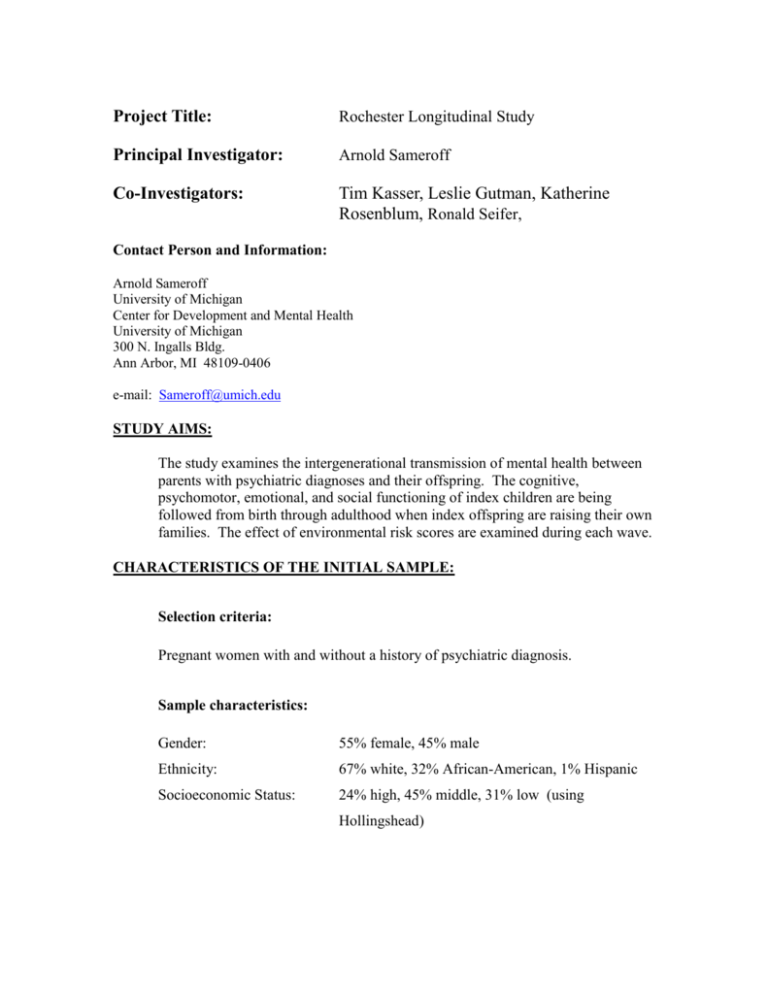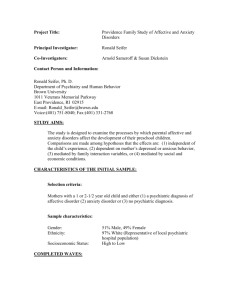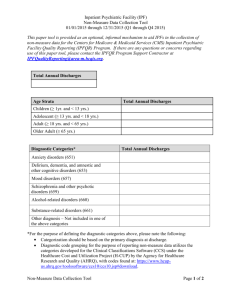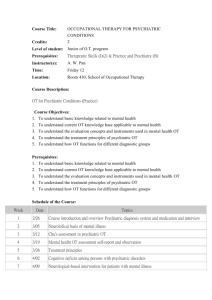Project Title: - University of Michigan
advertisement

Project Title: Rochester Longitudinal Study Principal Investigator: Arnold Sameroff Co-Investigators: Tim Kasser, Leslie Gutman, Katherine Rosenblum, Ronald Seifer, Contact Person and Information: Arnold Sameroff University of Michigan Center for Development and Mental Health University of Michigan 300 N. Ingalls Bldg. Ann Arbor, MI 48109-0406 e-mail: Sameroff@umich.edu STUDY AIMS: The study examines the intergenerational transmission of mental health between parents with psychiatric diagnoses and their offspring. The cognitive, psychomotor, emotional, and social functioning of index children are being followed from birth through adulthood when index offspring are raising their own families. The effect of environmental risk scores are examined during each wave. CHARACTERISTICS OF THE INITIAL SAMPLE: Selection criteria: Pregnant women with and without a history of psychiatric diagnosis. Sample characteristics: Gender: 55% female, 45% male Ethnicity: 67% white, 32% African-American, 1% Hispanic Socioeconomic Status: 24% high, 45% middle, 31% low (using Hollingshead) COMPLETED WAVES: Wave Age of Subjects N: 1 2 3 4 5 6 7 perinatal 4 mos. 12 mos. 30 mos. 4 yrs. 13 yrs. 18 yrs. 337 262 263 234 214 180 157 30 yrs. --- CURRENT FUNDED WAVES: 8 DEVELOPMENTAL STAGES: Infancy Early Childhood Adolescence Young Adulthood MEASURES Personal Personality: Temperament Locus of control Self-Esteem Cognitive Competence: Intelligence School performance Symptoms and Syndromes: Minor Physical Anomalies Psychiatric Diagnoses , Social-medical history Social Family: Parent mental illness Parenting Values and Attitudes Family Functioning Mother-child interaction Peers: Peer-Parent conflict Neighborhood: Neighborhood Problems Stresses and Supports: Social support Life events Environmental Risk REPRESENTATIVE FINDINGS: 1. 2. 3. Mother’s specific psychiatric diagnosis was not found to be related to early child outcomes but general factors of severity of symptoms and chronicity of illness were. Cumulative environmental risk was related to child outcomes at each wave. The number of risk factors was a better predictor of child outcomes than any specific single risk factor or characteristic of the child. REPRESENTATIVE PUBLICATIONS: Sameroff, A. J., Seifer, R., & Zax, M. (1982). Early development of children at risk for emotional disorder. Monographs of the Society for Research in Child Development, 47:(Serial No. 199). Sameroff, A. J., Seifer, R., Zax, M., & Barocas, R. (1987) Early indicators of developmental risk: The Rochester Longitudinal Study. Schizophrenia Bulletin, 13:383-393. Sameroff, A. J., Seifer, R., Baldwin, A. & Baldwin, C. (1993). Stability of intelligence from preschool to adolescence: The influence of social and family risk factors. Child Development, 64, 80-97. Sameroff, A. J., Bartko, W. T., Baldwin, A., Baldwin, C., & Seifer, R. (1999). Family and social influences on the development of child competence. In M. Lewis & C. Feiring (Eds.), Families, risk, and competence (pp. 161-186). Mahwah, NJ: Lawrence Erlbaum Associates.






